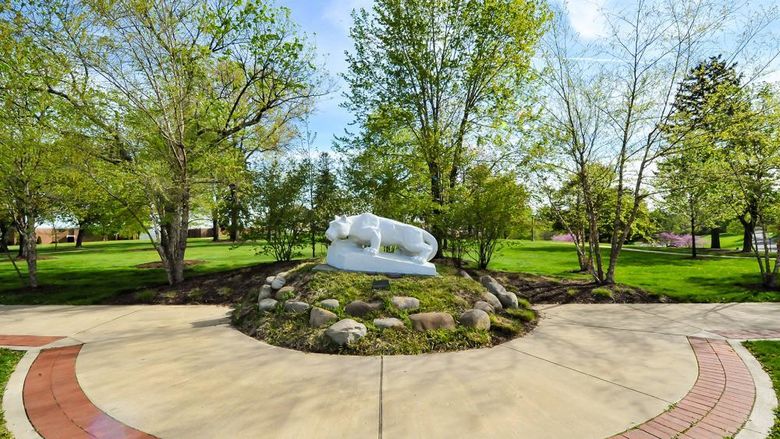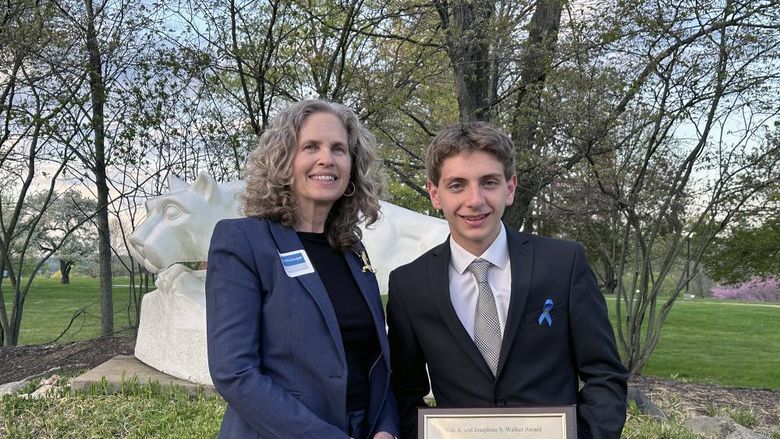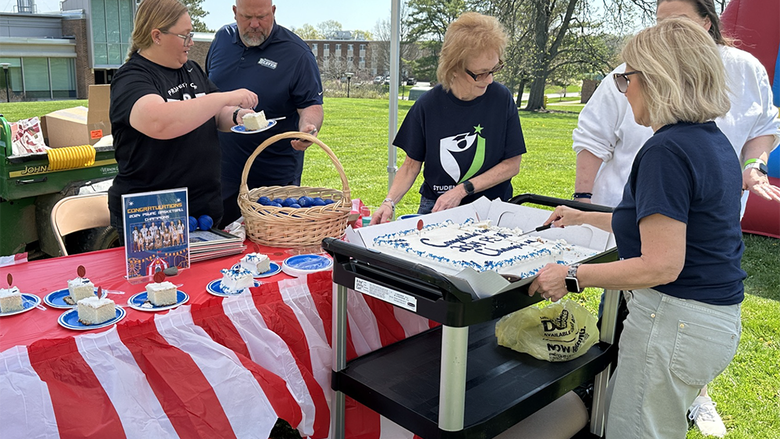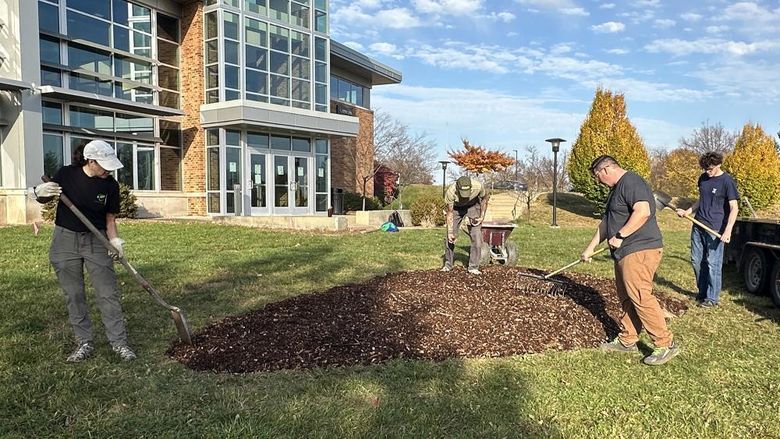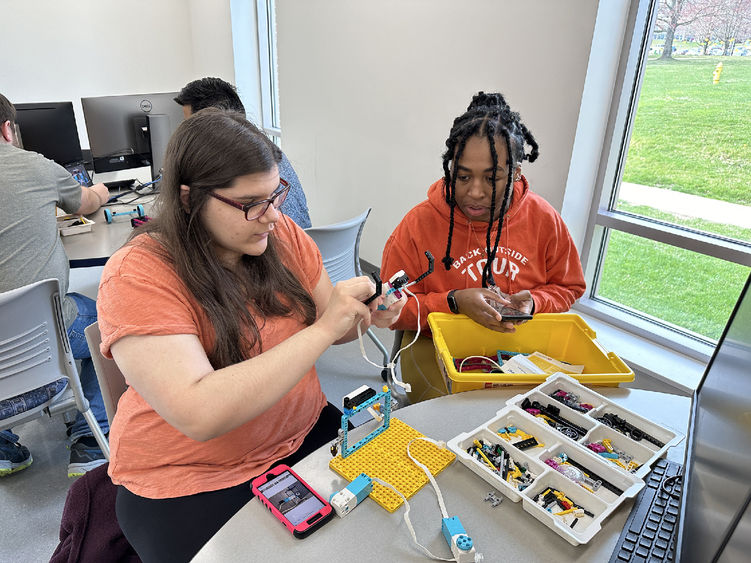
Information Technology students Stephanie Milovich, left, and Tyera Yates, work to assemble their build to present at a conference. Their build involved a Frankenstein-like creation that pops up.
MONACA, Pa. — Students sat in a computer lab in the Michael Baker Building one morning, gathered in groups around tables, constructing and tinkering with LEGO bots.
But unlike many students who simply enjoy creative building with LEGO, these students had a much more serious purpose. They were preparing to present their builds at the Penn State Teaching and Learning with Technology symposium with Steve Kanicki, lecturer of information technology at Penn State Beaver. The symposium focused on pedagogy and how new technology can be used to better serve students.
Kanicki challenged his IST 331 Human-Centered Design students to build something useful.
The bot builds included a robot that can putt a golf ball, a robot that can play a keyboard, a truck that can move, and a Frankenstein-like monster that pops up from a grave site.
Kanicki said the students came up with 10 initial ideas and picked the ideas that seemed the most promising. The groups then began drawing their plans.
Questions he asked them to consider were, “Is it fun to use?” and “What purpose does it serve?”
Kanicki invited his students to attend the symposium with him to present their projects. He said they not only gained experience presenting at a conference but now they have something to add to their resumes.
“It was such a wonderful experience,” Stephanie Milovich, a third-year student, said. “I got to be in a small room with other colleagues from other Penn State campuses and just getting to present what I did to them so they can get ideas for their campus is just so fun and a nice learning experience … I never thought I could get an opportunity like this, and I’m so thankful.”
Students majoring in IT at Penn State Beaver have the option to focus on application development, business applications or cyber security.
While Kanicki’s 300-level students were preparing for the conference, Ashu Kumar’s Cyber 100 students were tasked with designing a security device for their course capstone project.
Kumar, assistant teaching professor of information technology, set a few parameters and allowed the students to come up with their own concepts. The students had to design a device that works using software, hardware and a network.
Some students chose to create lockboxes that opened with some form of technology, and they designed and built their own boxes using 3-D printers.
Zach Cuteri, Austin Tocar and Uday Sharma created a lockbox that opens with a chip card while Josh Bruno, Chase Alexander and Maurice Barbour II developed a computer that gives the user a code to a padlock after correct security codes are answered.
Another group of students – Ivan Fabyanic, Yannis Azong and Lukas Miller – developed a motion-controlled security camera that is similar to a camera doorbell. The device uses software and can detect motion and turn the camera on. The camera footage can be viewed by logging into an IP address.
The capstone gives students a chance to put into practice what they’ve learned throughout the semester in a real-world application.
Kanicki said giving the students hands-on experiences is good pedagogy that allows them to apply what they've learned.
Learn more about the Information Technology major at Penn State Beaver.
